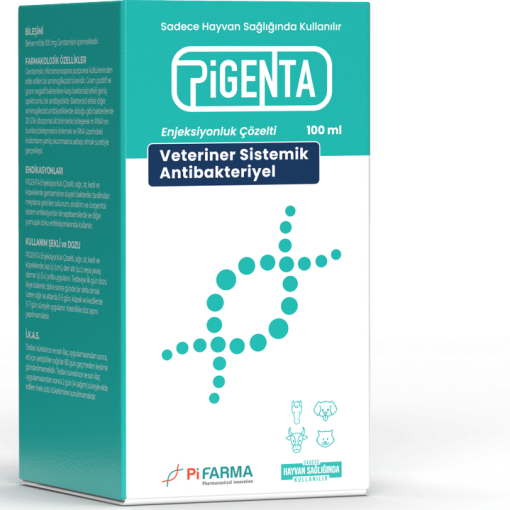Scalibor
Can only be used in Animal Health
Ectoparasitic/Acaricide
Medicated Collar
COMPONENTS
The beaker in brown, white or black contains 4% deltamethrin.
PHARMACOLOGICAL PROPERTIES
Scalibor medicated collar contains deltamethrin from the synthetic pyrethroid group as an antiparasitic. Deltamethrin is a synthetic pyrethroid insecticide applied locally to combat ectoparasites such as sensitive ticks, lice and flies. Synthetic pyrethroids act as contact and stomach poisons, similar to natural pyrethrins, and do not produce a systemic effect. Insecticides from this group are lipophilic. For this reason, they easily pass through the insect’s cuticle, which is rich in lipoid molecules, and reach their impact point. It shows its effect by changing the entry kinetics of the parasites’ sodium channels in the nerves. As a result of this effect, death occurs in the parasite as a result of either continuous sodium loss or membrane depolarization. Additionally, recent studies have revealed that pyrethroids suppress gamma-aminobutyric acid (GABA) and glutamate receptor – channel complexes in parasites. As a result of parasite poisoning, excitation, incoordination of movements, paralysis, dehydration and death are observed in the parasite. Since deltamethrin is a very lipophilic substance, it is not affected by rain after application. When applied to the skin, it disperses through the skin and is slightly absorbed after application, continuing to be effective on the target parasite. It is mainly excreted in the feces of the treated animals.
Toxicological information: Pyrethroids are safe ectoparasitics. According to the classification of the World Health Organization, toxicity class is II. The mechanism of toxicity in mammals is the same as described in parasites. Toxic effects may take hours to appear, depending on the agent used and route of administration. Cis-isomers have higher toxicity. The acute oral LD50 value of cis: trans 90:10 cypermethrin is 367 mg/kg body weight in female rats; The same value for cis : trans 40 : 60 is 891 mg/kg live weight. The acute dermal LD50 value in rats is 400-4000 mg/kg body weight.
AREA OF USE/INDICATIONS
It is used to combat ticks and fleas in dogs. It provides protection against tick infestation for 6 months and flea infestation for 4 months. It can be used as part of a Leischmenia protection program due to its regressive effect against Phlebotomus spp.
USAGE AND DOSAGE
One collar is attached to each animal without squeezing the animal’s neck. The remaining collar part is cut off, leaving a 5 cm margin. It can be applied to puppies after 7 weeks. The collar must be worn 1 week before entering an infected area. It should not be applied to animals with widespread skin lesions.
SPECIAL CLINICAL INFORMATION AND WARNINGS FOR TARGET SPECIES
Ticks are parasites that feed on animals and humans by sucking blood. Many bacteria and viruses can be transmitted through ticks. In other words, ticks are carriers of infection. Infected ticks can transmit some diseases (e.g. Borreliosis, Babesiosis, Ehrlichiosis, etc.) to humans as well as animals. Scalibor tick and flea collar prevents tick infestation and diseases carried by these parasites. Fleas act as intermediate hosts for stripes found on dogs. For this purpose, flea control should be carried out along with strip spraying. For successful and effective flea control, the environment of the animal, which is a constant source of infestation (eggs, larvae and pupae), should also be disinfected. In rare cases, tick infestation may occur while the collar is around the animal’s neck. However, they die within 3 days before sucking blood.
Use During Pregnancy: No complications have been reported regarding its use during pregnancy.
UNDESIRED/SIDE EFFECTS
If the collar is eaten by the dog, irregular movements, tremors and hypersalivation occur. Symptoms improve within 48 hours.
DRUG INTERACTIONS
Organic phosphorus compounds slow or prevent the hydrolysis of pyrethroids, which increases the toxicity of the drug to mammals.
SYMPTOMS OF OVERDOSE, PRECAUTIONS, AND ANTIDOTE
Although there is no danger of overdose due to the method of application, symptomatic treatment should be applied in rare cases of skin reactions to the collar or the active ingredients.
RESIDUAL WARNINGS FOR FOOD PRODUCING ANIMALS
Drug Residue Elimination Period: It is not used in animals with food value.
CONTRAINDICATIONS
The collar should not be used on dogs with extensive skin lesions, or on sick or convalescent dogs. It cannot be used in any other way other than being worn around the dog’s neck as described.
GENERAL WARNINGS
Consult your veterinarian before use. Keep out of children reach. Consult your veterinarian if an unexpected effect occurs.
PRECAUTIONS TO BE TAKEN BY THE PRACTITIONER
Hands must be washed with soap after the administration of the collar. It should be kept away from the children reach, not be allowed to play or come into contact with the mouth.
STORAGE CONDITIONS AND SHELF LIFE
The shelf life is 3 years if its kept under 25°C room temperature.
WARNINGS FOR END OF USE DISPOSAL AND NON-TARGET SPECIES
Deltamethrin is toxic to bees and fish. After use, do not throw the packages into stagnant or streams where living creatures live. Do not use the packaging materials for any other purpose and dispose of them properly.
TRADE DRESS
There is 1 leash, 48 cm and 65 cm long, in a polyethylene-aluminum-kraft paper bag.
SALES LOCATION AND CONDITIONS
It is sold in pharmacies and veterinary offices with a veterinarian’s prescription.




